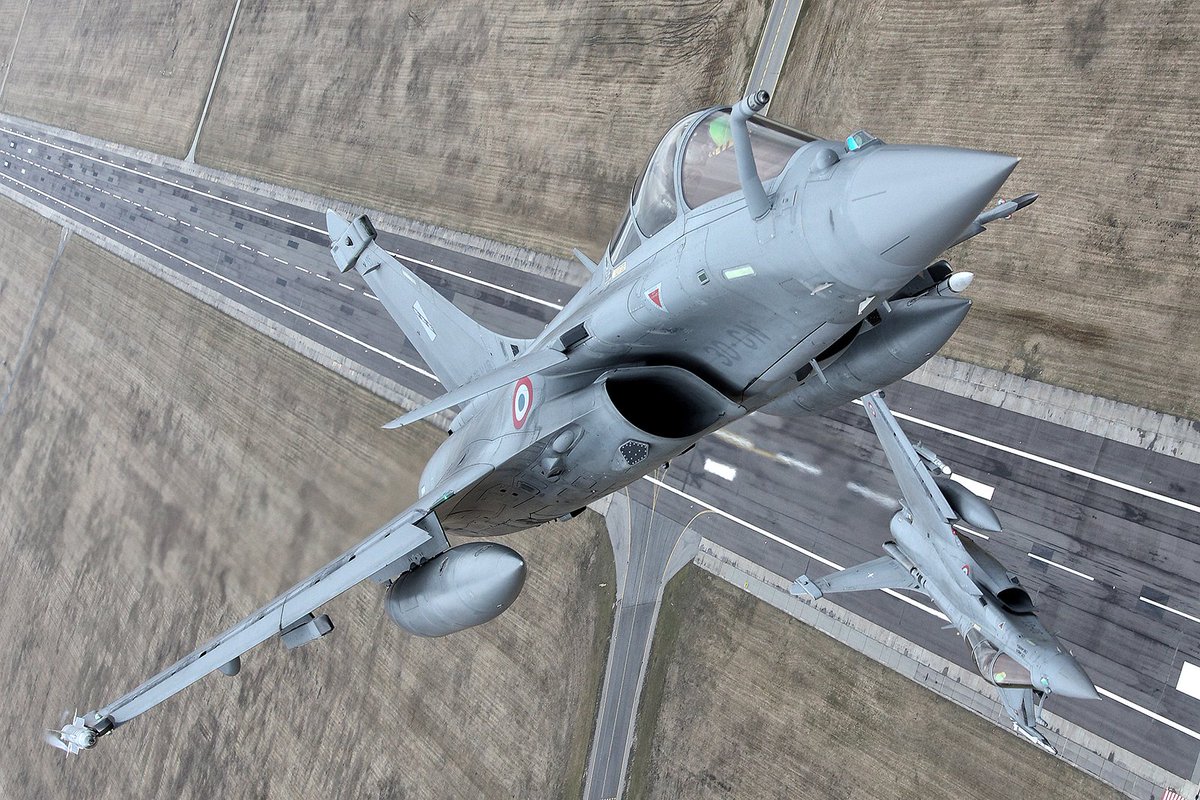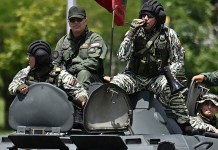The Indian Air Force’s (IAF) annual press conference on October 3, 2025, ahead of Air Force Day celebrations, served as a pivotal platform for Air Chief Marshal Amar Preet Singh to unveil critical details about Operation Sindoor, marking it as the most significant military engagement of the year.
This operation, executed in May 2025 in retaliation for the deadly Pahalgam terror attack, exemplified the IAF’s precision, joint-service coordination, and technological superiority.
Described by the IAF Chief as a “milestone” that would “go down in history,” Operation Sindoor not only neutralized terror infrastructure but also inflicted substantial damage on Pakistan’s air assets, demonstrating India’s evolving doctrine of proactive deterrence.
The conference highlighted how long-range surface-to-air missiles (SAMs) turned the tide, achieving strikes over 300 km deep into enemy territory and crippling Pakistan’s operational capabilities.
The operation shattered illusions of Pakistani air power and set a new benchmark for limited conflicts in South Asia.
#WATCH | Delhi: Responding to ANI's question on the losses suffered by Pakistan during Operation Sindoor, Indian Air Force Chief Air Chief Marshal AP Singh says, "…As far as Pakistan's losses are concerned…we have struck a large number of their airfields and we struck a large… pic.twitter.com/qhf7yl27LO
— ANI (@ANI) October 3, 2025
The Catalyst Of The Pahalgam Terror Attack
Operation Sindoor was born out of necessity following the brutal terror attack in Pahalgam, Jammu and Kashmir, on April 22, 2025, which claimed 26 innocent lives.
Orchestrated by Pakistan-based militants from groups like Jaish-e-Mohammed (JeM) and Lashkar-e-Taiba (LeT), the assault targeted civilians, underscoring Pakistan’s continued sponsorship of cross-border terrorism despite international condemnations.
High-level inter-service meetings convened swiftly on April 24, with tactical preparations ramping up by April 29. Political clearance granted broad operational freedom, allowing for a calibrated yet devastating response.
By May 5, the strike timeline was finalized, with primary executions scheduled for the early hours of May 6, 7, and 9, all under the cover of darkness.
In my op-ed, “21 Minutes of Havoc! IAF Attack on Pakistan Shattered Its Illusions,” I detailed how this operation built on lessons from the 2019 Balakot strikes but escalated in scope and impact.
I emphasized that Sindoor was not mere retaliation but a “symphony of missiles and drones” targeting nine terror camps, including JeM’s headquarters in Bahawalpur and LeT’s in Muridke.
These strikes neutralized 80-100 terrorists, including key leaders, with UAV footage and satellite imagery providing irrefutable evidence of destruction to administrative blocks, training facilities, and leadership residences.
My analysis, echoed on many channels like CNN, News18, and NewsX, portrayed the operation as a shift from reactive defense to “conflict domination,” where India imposed costs on the aggressor without escalating to full-scale war.
The four-day campaign, as revealed by ACM Singh, achieved its objectives with remarkable speed, leading Pakistan to seek a ceasefire through backchannels by May 10. This swift termination underscored a key lesson: the importance of decisive starts and ends in hostilities to maintain strategic advantage.
Revelations From The IAF Chief
At the conference, ACM Singh pulled no punches in detailing the operation’s success, debunking Pakistani “manohar kahaniyan” (entertaining stories) that downplayed India’s achievements.
He confirmed that the IAF, as the prime stakeholder, struck a large number of Pakistani airfields and installations, preventing the adversary from operating effectively even within its own borders.
Specific damages included radars at four locations, command and control (C2) centers at two places, runways at two sites, and three hangars across different stations—possibly housing C-130 transport aircraft. One SAM system was also destroyed, further eroding Pakistan’s defensive posture.
In a stunning disclosure, Singh revealed the destruction of around 9-10 Pakistani fighter jets: 4-5 F-16s neutralized on the ground while under maintenance, and five high-tech fighters (F-16 and JF-17 class) shot down in the air.
Additionally, systems indicated the loss of one C-130-class aircraft and a long-range strike on either an Airborne Early Warning and Control (AEW&C) or signals intelligence (SIGINT) platform over 300 km inside Pakistan—the longest such kill recorded.
These strikes, executed with minimal Indian casualties, brought Pakistan “to its knees” in just one night, showcasing the IAF’s achook (unerring), abhedya (impenetrable), and sateek (precise) capabilities.
The game-changer, as per Chief, was India’s long-range SAMs, particularly the S-400 system, which enabled deep penetration and curtailed enemy activities.
This robust air defense infrastructure not only repelled Pakistani escalations but also inflicted catastrophic damage, marking the first public revelation of such scale since the 1971 war. He praised the media’s role in countering disinformation during the “fog of war,” ensuring public morale remained high.

My From Articles To Channel Talks
In my earlier EurAsian Times op-ed, “F-16s Decimated, JF-17s Silenced, Nerve Centre Crippled,” I analyzed how the strikes dismantled Pakistan’s aerial backbone, targeting bases such as Shahbaz (Jacobabad), Nur Khan (Rawalpindi), and Mushaf (Sargodha).
I detailed partial destruction of hangars—incinerating jets inside—and cratered runways that halted operations, confirmed by satellite imagery showing smoke plumes and structural collapse. I argued that these hits disrupted the Pakistan Air Force’s (PAF) C4ISR network, limiting patrols, refueling, and coordination, while eroding command mobility.
I further fact-checked claims, debunking rumors of Indian losses and emphasizing zero IAF aircraft downed.
In a YouTube discussion on “How Many Fighter Jets India Lost in Ops Sindoor?” I clarified that Pakistan’s denials masked heavy losses, including five jets and a surveillance aircraft via surface-to-air kills—the largest ever. I highlighted the operation’s boldness, penetrating 300 km deeper than Balakot, and its role in exposing Pakistan’s hypocrisy in terrorism sponsorship.
In “Operation Sindoor and the Collapse of Pakistani Air Power,” I have framed the strikes as a “strategic setback,” with widespread degradation across facilities, including Chinese HQ-9 and LY-80 systems. I had said a precision attack that avoided civilian casualties while vaporizing threats mid-flight.
Technical & Tactical Breakdown
Operation Sindoor’s success hinged on a fusion of indigenous and imported technologies. The IAF deployed 80-90 aircraft, including 12 x Mirage 2000s armed with Spice 2000 bombs and Crystal Maze missiles, supported by Su-30MKIs launching BrahMos supersonic cruise missiles at Mach 3.
Rafales and Mirages fired SCALP/Storm Shadow missiles for standoff strikes up to 500 km, while AASM Hammer glide bombs ensured all-weather precision.
DRDO’s Akash SAMs and SkyStriker loitering munitions neutralized threats, with the Integrated Air Command and Control System (IACCS) and AI-driven Akashteer enabling real-time interceptions.
The S-400’s 300+ km range downed five PAF jets and an AEW&C, as I have noted in my talks on drone warfare’s future role—from Ukraine parallels to Sindoor’s drone swarms. Pakistan’s retaliation—over 300 drones and CM-400 munitions under “Operation Bunyan al-Marsus”—was thwarted entirely, showcasing India’s defensive evolution.
My analysis in “21 Minutes of Havoc” timed the core assault between 1:05 and 1:30 a.m. IST on May 7, a 21-minute window from airspace entry to exit, targeting terror sites and airbases like Rafiqui, Bholari, and Sialkot.
This brevity minimized exposure while maximizing impact, destroying six aircraft in the air, two on the ground, ten drones, and a C-130, with no Indian losses.
Strategic Implications
Strategically, Operation Sindoor inflicted a five-year setback on the PAF. It redefined South Asian deterrence, demonstrating the decisiveness of air power in limited wars and boosting global interest in Indian systems, such as BrahMos—19 countries inquired post-operation.
For India, it accelerated Aatmanirbhar Bharat in defense, with ACM outlining Roadmap 2047 for enhanced combat capabilities, including the Sudarshan Chakra (India’s Iron Dome analog).
In earlier articles in Eurasian Times, I warned of evolving threats, such as drone swarms, advocating for real-time defenses over reactive measures. The operation exposed the China-Pakistan axis’s vulnerabilities, with strikes on Chinese-supplied systems signaling India’s preparedness. It also managed the “fog of war” effectively, with media countering propaganda to sustain morale.
Looking ahead, Chief emphasized adaptability: “The next war will not be like the last one,” urging self-reliance amid ongoing challenges. I have said, positioning Sindoor as a template for counter-terror ops, where precision and jointness dominate.
Conclusion: Legacy Of Strength & Precision
Operation Sindoor, as illuminated at the IAF conference, stands as a testament to India’s military prowess, blending retribution with restraint.
Chief’s revelations, corroborated by my expert analyses in articles and talks, paint a picture of overwhelming superiority—destroying assets, deterring aggression, and securing peace through strength.
This operation not only avenged the Pahalgam victims but also fortified India’s strategic posture, ensuring that future threats face an unyielding resolve.
In a volatile world, Sindoor’s legacy endures: deterrence through strength, not submission. Operation Sindoor underscores the enduring significance of air operations, urging continued investment in air power for a secure tomorrow.
- Group Captain MJ Augustine Vinod (Retd), VSM, is a former Mirage 2000 fighter pilot, air accident investigator, and co-founder of AMOS Aerospace. He writes on emerging defense technologies, AI in warfare, and India’s aviation future.
- This is an Opinion Article. Views Personal Of The Author
- He tweets at @mjavinod




